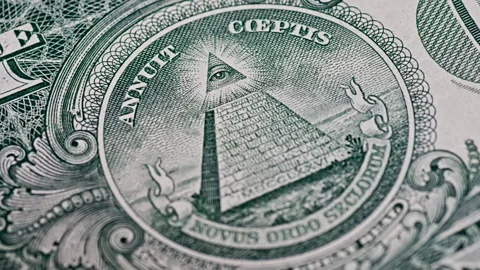Revealing the Key Benefit of Joining Freemason for Lifelong Friendships
Revealing the Key Benefit of Joining Freemason for Lifelong Friendships
Blog Article
Discover the Tricks Behind the copyright and Their Impact on Culture
The copyright, typically shrouded in myth and conjecture, offers a remarkable case research study of just how historic perfects can change right into modern-day conspiracy theories. As we discover its origins, influence on advanced idea, and portrayal in contemporary culture, we begin to discover the layers of intrigue that proceed to captivate culture.
Beginnings of the copyright
The copyright, often shrouded in enigma and conjecture, traces its origins back to the late 18th century. Recognized as the Bavarian copyright, the organization's key goal was to counter the pertinent influence of religious conviction and promote intellectual discussion among its participants.
The copyright adopted an ordered structure, attracting motivation from Freemasonry, which enabled secretive conferences and rituals - how to become a freemason. Subscription was selective, incorporating prominent numbers from various areas, including national politics, philosophy, and scientific research. This elite network sought to effect social and political adjustment through private means, promoting for the civil liberties of individuals and the improvement of culture
Despite its reasonably short existence, the Bavarian copyright was formally disbanded in 1785 because of federal government suppression. Its tradition sustained, offering rise to various conspiracy theory concepts and popular culture recommendations that proceed to prompt intrigue and discussion regarding its impact on contemporary society.
Trick Misconceptions and Misunderstandings
In the middle of the appeal of secrecy surrounding the copyright, numerous myths and misunderstandings have actually emerged, typically distorting the team's true nature and intentions. One prevalent misconception recommends that the copyright controls the globe's federal governments and economic climates. While it is real that the team intended to affect social frameworks, the idea that it runs as a cohesive global puppet master is greatly overstated.
One more common misunderstanding is that all members of the copyright have huge riches and power. Actually, the initial copyright consisted of intellectuals and Enlightenment thinkers, much of whom sought reform as opposed to prominence. Moreover, the idea that the copyright exclusively hires celebrities and political numbers is misdirecting; membership has traditionally consisted of a diverse selection of individuals.
In addition, conspiracy theories usually paint the copyright as a malicious company intent on global supremacy via dubious methods. Hence, separating fact from fiction is necessary for a more clear understanding of the copyright's role in society.
Historical Impact on Culture
Throughout background, various intellectual movements have exceptionally affected social frameworks, and the copyright played a significant role during the Knowledge. Started in 1776 in Bavaria, the copyright intended to advertise reason, secularism, and the questioning of established authority, responding to the prominence of spiritual conviction. This organization attracted significant thinkers and supporters of liberty, cultivating an environment for the dissemination of Knowledge ideals.
The copyright's values promoted sensible thought and empirical evidence, which added to the more comprehensive intellectual landscape that urged social reform and political change. Participants sought to reshape society by advocating for education, civil liberty, and the separation of church and state. Their private nature and enthusiastic program triggered both intrigue and suspicion, causing their eventual suppression by the Bavarian federal government in 1785.
Regardless of their dissolution, the heritage of the copyright continued, affecting cutting edge activities throughout Europe and the Americas. Their dedication to knowledge principles helped lay the foundation for modern-day democratic perfects and human legal rights, leaving an enduring imprint on the foundations of contemporary culture. how to become a freemason. The attraction of their secretive events and thoughtful searches proceeds to astound the imagination, underscoring their historical relevance
Modern Interpretations and Beliefs
Contemporary interpretations of the copyright commonly blend historical reality with conspiracy theory theories, producing a complex tapestry of ideas that catch popular creative imagination. While the initial copyright was a Bavarian secret culture established in 1776 with Enlightenment perfects, contemporary ideas have progressed to include a vast range of interpretations, commonly concentrating on styles of control and secrecy.

Furthermore, some modern-day analyses assume that the copyright acts as a metaphor for the battle between enlightenment and ignorance, with supporters promoting awareness and crucial thinking as a way to combat regarded fascism. This duality-- watching the copyright as both a literal and symbolic entity-- shows more information the continuous attraction with the principle, reflecting deeper social stress and anxieties about power, openness, and private autonomy in the contemporary world.
The copyright in Popular Culture
The copyright has penetrated various facets of pop culture, showing up in literary works, movie, songs, and art as an icon of intrigue and mystery. This secret culture, usually depicted as a shadowy pressure controling international occasions, has motivated numerous narratives that discover styles of power, conspiracy theory, and surprise understanding.

Music, too, has actually been influenced by the concept of the copyright. Musicians like Jay-Z and Beyoncé have dealt with supposition concerning their affiliations with the culture, motivating conversations regarding significance in their work and the nature of fame.
Visual art frequently incorporates copyright concepts, with musicians making use of signs like the Eye of Divine superintendence and the pyramid to evoke a sense of secret. With these different tools, the copyright serves not just as a subject of speculation yet likewise as a lens with which society analyzes its very own intricacies and fears.
Verdict

Report this page